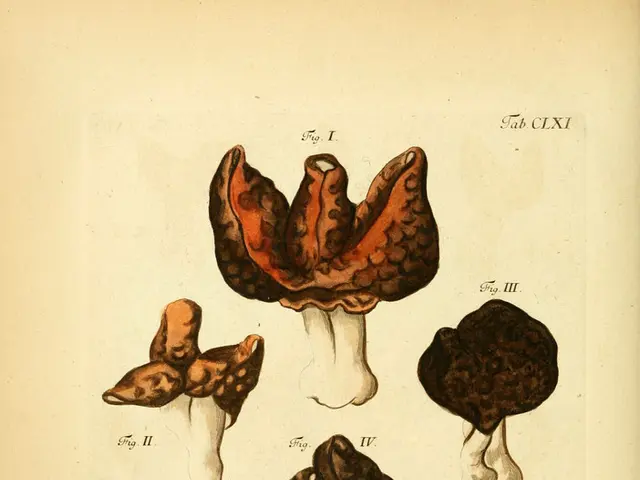Store it and place it on the bed.
In the world of gardening, the ornamental garlic (Allium) stands out as a versatile and easy-to-maintain plant. Known for its architectural structure and lilac-colored spheres, this undemanding plant is a popular choice among garden enthusiasts. Susanne, a knowledgeable neighbour, refers to it as an "architectural plant."
When it comes to caring for ornamental garlic, there are a few key points to consider. During the growing season, these alliums typically do not require heavy cutting back. Instead, allow the foliage to die back naturally, as this helps the bulbs store energy for next season. However, once the flower heads fade and the stems start to yellow, you can trim back the dried flower stalks to keep the garden tidy, being careful not to cut back green foliage prematurely since the leaves feed the bulb for next year’s growth.
Most ornamental allium bulbs should be planted and left in place year-round in mild climates. In colder zones or if you want to divide the bulbs, you can dig them up after the foliage has completely died back in late summer or early fall. When lifting bulbs, loosen the soil gently to avoid damage. Store bulbs in a cool, dry place if replanting later.
Alliums don’t usually require heavy feeding. Average garden soil is normally sufficient. At planting time, you can mix in some bulb fertilizer or bone meal for an extra nutrient boost to encourage strong root and bulb development. Regular fertilizing during the growing season is generally unnecessary but can be applied lightly if the soil is poor.
Alliums prefer full sun for optimal flowering but can tolerate some partial shade, especially in hotter climates. Plant bulbs at a depth about three times their height, with the pointed end facing upward, and space them 6 to 8 inches apart for larger bulbs.
A garden trick suggests sticking the cut stems of the ornamental garlic back into the ground. This trick allows for the Allium stems with spheres to remain in the bed, adding an attractive touch to the garden.
It's important to note that after a few years, daughter bulbs have formed on the ornamental garlic bulbs. These daughter bulbs also cost energy, which can affect the size of the flowers. The detached daughter bulbs are replanted, and the mother bulb is also replanted.
Failing to cut back the ornamental garlic can lead to smaller flowers next year. On the other hand, cutting back the ornamental garlic too early can cost the bulbs too much energy.
For a more in-depth look at gardening tips, follow B.Z.'s garden influencer on Instagram @smallberlingarden. When it comes to ornamental garlic, remember to allow foliage to mature before cutting back, perform gentle bulb digging after dormancy for division or storage if needed, and light fertilizing mainly at planting. These steps will help ornamental garlic thrive and produce attractive blooms each season.
For organic fertilization, an organic full fertilizer like horn meal or manure extract from cattle dung pellets is suitable for the ornamental garlic. As the attractive flowers of the ornamental garlic perfectly bridge the gap between spring flowers and perennials, this architectural plant is indeed a valuable addition to any garden.
When tending to your ornamental garlic, it's crucial to let the foliage mature before cutting back. This practice allows the bulbs to store energy for the next growing season. Additionally, maintaining a home-and-garden that includes home-gardening projects, such as the cultivation of ornamental garlic, allows you to enjoy its unique lilac-colored spheres and architectural structure, adding an attractive touch to your home-and-garden lifestyle.







